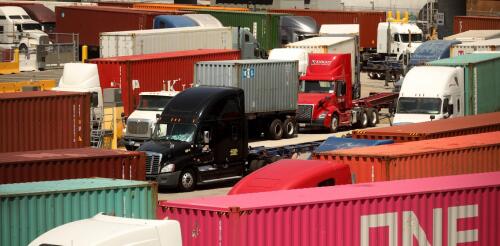Regulation
Gas stoves are a leading source of hazardous indoor air pollution, but they emit only a tiny share of the greenhouse gases that warm the climate. Why, then, have they assumed such a heated role in climate politics? This debate reignited on Jan. 9, 2023, when Richard Trumka Jr., a member of the U.S. Consumer Product Safety Commission, told Bloomberg News that the agency planned to consider regulating gas stoves due to concerns about their health effects. “Products that can’t be made safe can be banned,” he noted. Politicians reacted with overheated outrage, putting gas stove ownership on a par with the right to bear arms and religious freedom. CPSC Chair Alexander Hoehn-Saric tried to douse the uproar, stating that he was “not looking to ban gas stoves” and that his agency “has no proceeding to do so.” Neither does the Biden administration support a ban, a White House spokesperson said. Nevertheless, congressional Republicans raced to t...
Maine lobster fishermen received a Christmas gift from Congress at the end of 2022: A six-year delay on new federal regulations designed to protect critically endangered North Atlantic right whales. The rules would have required lobstermen to create new seasonal nonfishing zones and further reduce their use of vertical ropes to retrieve lobster traps from the seafloor. Entanglement in fishing gear and collisions with many types of ships are the leading causes of right whale deaths. Maine’s congressional delegation amended a federal spending bill to delay the new regulations until 2028 and called for more research on whale entanglements and ropeless fishing gear. Conservationists argue that the delay could drive North Atlantic right whales, which number about 340 today, to extinction. This is the latest chapter in an ongoing and sometimes fraught debate over fishing gear and bycatch – unintentionally caught species that fishermen don’t want and can’t se...
As part of its effort to reduce air pollution and cut greenhouse gas emissions that contribute to climate change, California is pursuing aggressive policies to promote clean trucks. The state already requires that by 2035, all new cars and other light-duty vehicles sold in the state must be zero emission. Its powerful Air Resources Board has adopted rules requiring that most trucks be zero emission by 2035, and is now proposing that all trucks sold by 2040 must be zero emission. The Conversation asked a panel of transportation experts from the University of California, Davis what’s involved in such a rapid transition. 1. Why is California targeting medium- and heavy-duty trucks? Although diesel engines are valuable for moving heavy loads, they also are major polluters. Diesel trucks account for one-fourth of greenhouse gas emissions and about half of conventional air pollution from transportation in U.S. cities. Pollutants in diesel exhaust include nitrogen oxides, fine...
Replacing petroleum fuels with electricity is crucial for curbing climate change because it cuts carbon dioxide emissions from transportation – the largest source of U.S. global warming emissions and a growing source worldwide. Even including the impacts of generating electricity to run them, electric vehicles provide clear environmental benefits. Plug-in vehicles are making great progress, with their share of U.S. car and light truck sales jumping from 2% to 4% in 2020-2021 and projected to exceed 6% by the end of 2022. But sales of gas-guzzling pickups and SUVs are also surging. This other face of the market subverts electric cars’ carbon-cutting progress. As a researcher who studies transportation and climate change, it’s clear to me that EVs provide large carbon reductions that will grow as the electric grid shifts to carbon-free energy. But fleetwide emissions, including vehicles of all types and ages, are what ultimately matters for the climate. Whi...
The U.S. Supreme Court opens its new session on Oct. 3, 2022, with a high-profile case that could fundamentally alter the federal government’s ability to address water pollution. Sackett v. EPA turns on a question that courts and regulators have struggled to answer for several decades: Which wetlands and bodies of water can the federal government regulate under the 1972 Clean Water Act? Under this keystone environmental law, federal agencies take the lead in regulating water pollution, while state and local governments regulate land use. Wetlands are areas where land is wet for all or part of the year, so they straddle this division of authority. Swamps, bogs, marshes and other wetlands provide valuable ecological services, such as filtering pollutants and soaking up floodwaters. Landowners must obtain permits to discharge dredged or fill material, such as dirt, sand or rock, in a protected wetland. This can be time-consuming and expensive, which is why the case is of keen...




